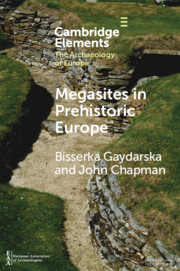Element contents
Megasites in Prehistoric Europe
Published online by Cambridge University Press: 07 October 2022
Summary
Keywords
- Type
- Element
- Information
- Online ISBN: 9781009099837Publisher: Cambridge University PressPrint publication: 27 October 2022



